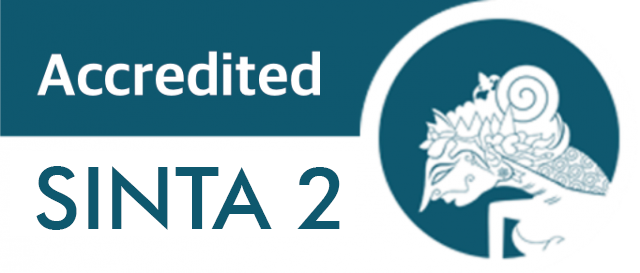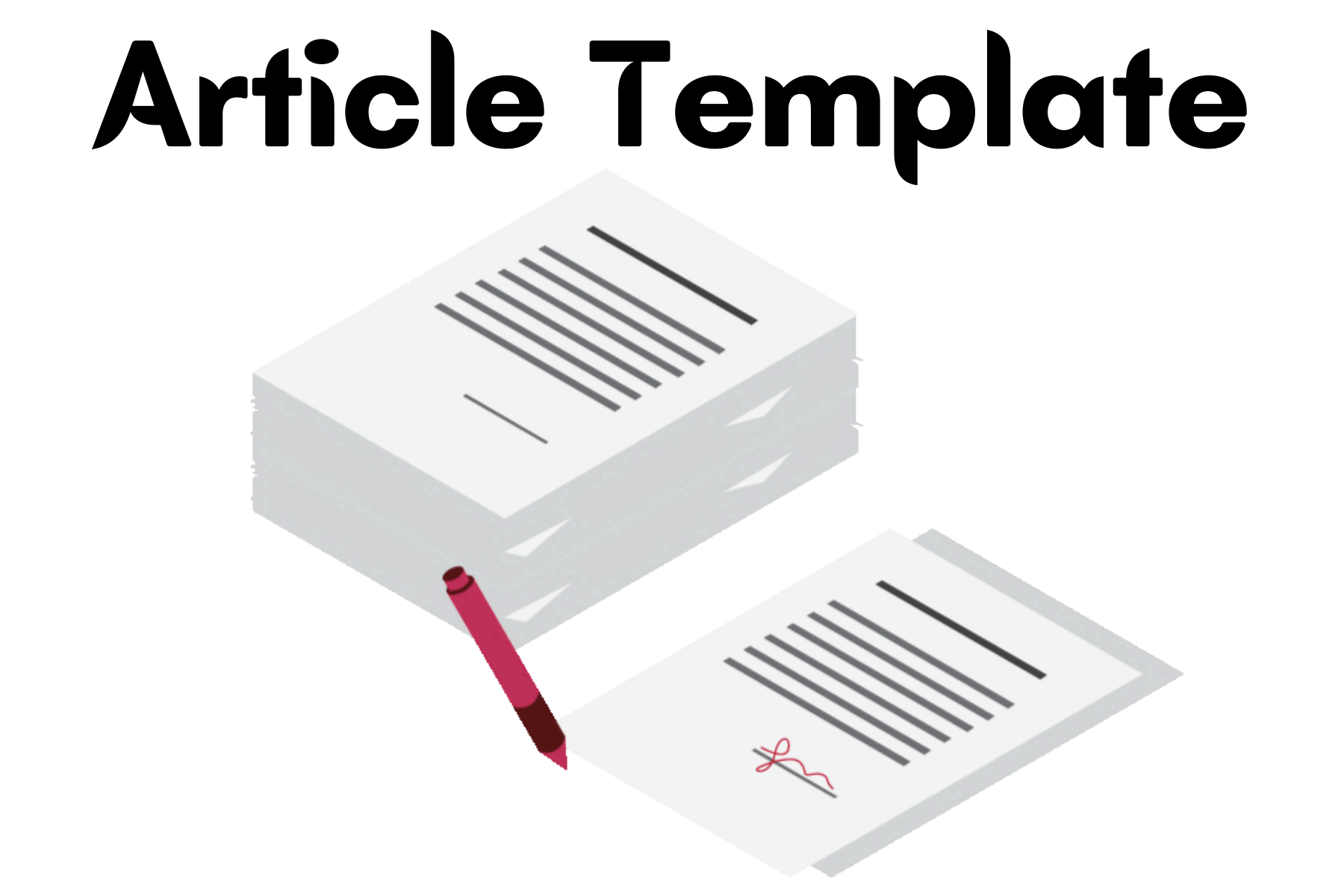LE-Probale Model through Nila's Edumath Interactive Mobile Learning to Improve Mathematical Literacy
Kata Kunci:
LE-Probale, NEIMoL, mathematical literacyAbstrak
Creating a supportive learning environment through psychological well-being is an important indicator in achieving true happiness in the learning process, and also through project-based learning so that it plays an important role in the learning environment and the results are very real. The aim of this research is to produce the LE-Probale model syntax. The learning model components used adopt Joyce and Weil. The quality of the product developed is evaluated based on product development evaluations developed by Plomp and Neeven, which include validity by validators, practicality and effectiveness of field trials by observers. The realization of the model syntax consists of ten stages, namely: 1) Preparing an adequate learning environment; 2) Delivery of learning objectives; 3) Selecting learning materials and determining topics that students must study inductively (from examples then generalizing); 4) Meaningful understanding is linked to everyday life; 5) Provide trigger questions to observe and solve; 6) Group formation; 7) Design and complete projects related to other subjects with the help of Nila's Islamic Edumath Interactive Mobile Learning; 8) Rearrange and compare representations of project results; 9) Evaluate the resulting projects; 10) Teacher and student reflection to look back at the learning that has taken place.
Referensi
Ally & Palalas, 2011. Mobile-assisted language learning: designing for your students. In S. Thouësny & L. Bradley (Eds.), Second language teaching.
Aslamiyah, AT, Setyosari, P., & Praherdhiono, H. (2019). PjBL model through technology and independent learning [PjBL model technology and independent learning]. Journal of Technology Education Studies, 2(2), 109-114. https://doi.org/h743 .
Baroody, 2018. Developing adaptive skills and flexibility: Integration of conceptual and procedural knowledge. Taylor & Francis Group. https://www.taylorfrancis.com/chapters/edit/10.4324/9781410607218-1/development-adaptive-expertise-flexibility-arthur-baroody .
Belland, Walker, Kim, & Lefler, 2017. Synthesizing empirical research results on computer-based scaffolding in STEM education. Educational Technology and Society. https://doi.org/10.3102/0034654316670999 .
Brezovszky et al., 2019. The influence of a mathematical game-based learning environment on elementary school students. Computers and Education, vol 128, pages 63-74. https://doi.org/10.1016/j.compedu.2018.09.011 .
Chin Ying Liew, et al. 2023. Innovative Approaches to Improve Active Online Learning: Engagement, Feedback, and the Classroom Environment. Asian Journal of University Education (AJUE), volume 19 (2). https://doi.org/10.24191/ajue.v19i2.22233 .
Diani, R., Herliantari, H., Irwandani, I., Saregar, A., & Umam, R. (2019). Effectiveness of the SSCS learning model: Its impact on students' creative problem solving abilities in the design of pressurized substances. Journal of Physics Studies and Applications, 9(1), 65-77. https://doi.org/h744 .
Devolder et al., 2022. Structural indicators for monitoring education and training systems in Europe. European Union. (24) OJ C 66, 26.2.2021. Page 3.
Gerber Perez Postigo, et al. 2023. First International Congress of Research, Technological Development and Innovation in University Education. Journal of Technology and Science Education, Vol 13 (2). http://dx.doi.org/10.3926/jotse.2185 .
Effendi, S. (2022). Elements of scientific research. In Masri Singarimbun (Ed.). Survey research methods . Jakarta: LP3ES.
Gunawan, Sahidu, H., Harjono, A., & Suranti, NMY (2017). Project-based learning with the help of virtual media influences student creativity in physics subjects. Journal of Educational Horizons, 36(2), 167-179. https://doi.org/h746 .
Hapizah. (2015). Increasing mathematical reasoning abilities, mathematical communication, and learning independence for prospective mathematics teacher students. [Probing prompting strategy to improve prospective mathematics teachers' mathematical reasoning abilities, mathematical communication, and learning independence] [Unpublished doctoral dissertation]. PPs Indonesian Education University.
Hariyanti, S., Arjudin, A., & Baidowi, B. (2021). The effectiveness of learning media on the mathematics learning performance of class XI students at SMA Negeri 10 Mataram. The influence of learning media on the mathematics learning performance of class XI students at SMA Negeri 10 Mataram. Mandalika Journal of Mathematics and Education, 3(1), 19-29. https://doi.org/gkcsp8
Hayati, WI, Utaya, S., & Astina, IK (2016). The effectiveness of project-based learning worksheets in developing students' critical thinking abilities in geography subject matter [The effectiveness of project-based learning worksheets in developing students' critical thinking abilities in geography subjects]. Journal of Education, 1(3), 468-474. https://bit.ly/3QIdxdP .
Hendrik, B., Masril, M., & Putra, u (2021). Increasing student learning independence through algorithm and programming courses I [Increasing student learning independence in algorithm and programming courses using the PjBL model through technology I]. Journal of Educational Knowledge, 3(4), 2192-2198. https://doi.org/h747
Herodotou, M. Aristeidou, E. Scanlon & S. Kelley (2022): Virtual Microscope and online learning: Exploring 12 teachers' perceptions of pedagogy, Open Learning: A Journal of Open, Distance and e-Learning, DOI:10.1080/02680513.2022.2112661.
Hinn & Duncan, 2021. I want to wish you great things. Embarrassing Records 16. Jensen, F., Pettersen, A., Frønes, T.S., Kjærnsli, M., Rohatgi, A., Eriksen, A., & Narvhus, E.K. (2019). PISA 2018 - Norske elevers kompetanse i lesing, mathematikk dan naturfag. https://www.udir.no/tall-og-forskning/finn-forskning/rapporter/pisa-2018/
Kepmendikbudristek , 2022. Guidelines for Implementing Curriculum in the Context of Learning Recovery (Independent Curriculum in Indonesia): Number 56.
Kukulska-Hulme & Traxler, 2015. Mobile Learning: The Next Generation (1st ed.). Routledge. https://doi.org/10.4324/9780203076095 .
Lehtinen et al., 2022. The fishbone diagram applies a tree structure where the causes of the problem are organized into several pre-made cause classes.
Liestøl, 2011. Simulation Situated between Virtual Reality and Mobile Augmented Reality: Designing Narrative Spaces.
Manah, NK, Isnarto, & Wijayanti, K. 2017. "Analysis of Mathematical Problem Solving Ability Based on Polya Students' Learning Stages in the Selective Problem Solving Model". Unnes Journal of Mathematics Education, 6(1):19–26.
Mask, R., Sumarno, Rahmawati, Y., Pradana, K., Syazali, M., Septian, A., & Palupi, OAK (2020). effectiveness of problem-based learning interactions and talent treatment in improving mathematical creative thinking abilities in the 2013 curriculum. European Journals of Educational Research, 9(1), 375-383. https://doi.org/h748 .
Nazarenko, A.L. (2015). Blended vs. blended learning Traditional learning: What works? (Case study study). Process-Social and Behavioral Sciences, 200, 77-82. https://doi.org/gf7jxr .
Nieveen, N. (2013). Educational Design Research. Enchede: Dutch Curriculum Development Institute is the sole responsibility of the respective authors and contributors and not of MDPI and/or the editors. MDPI and/or the editors disclaim responsibility for any injury to persons or property resulting from any ideas, methods, instructions or products referred to in the content.
NJ Kim et al., 2022. Efforts continue to incorporate AI into teaching and learning; However, the successful implementation of new learning.
Ojose, B. (2011). Mathematical Literacy: Are we able to apply the mathematics we learn in everyday life. Journal of Mathematics Education, 4(1), 89-100. https://bit.ly/3awJtSzMurray. 2014. Mathematical Literacy: Harper. Edition 29. Jakarta: EGC. New Health Guide.
Özgen & Bindak, 2011. Determination of High Self-Efficacy Beliefs. School Students towards Mathematical Literacy. Kuram and Uygulamada Egitim.
Panizza F., Peters BG, Ramos C. (2019). Roles, beliefs and skills: A typology of patronage appointments. Public Administration, 97, 147-161.
Parris, K., Threlfall, C. (2022). Enabling factors and challenges when engaging local communities for urban biodiversity conservation in Australian cities.
Phillips et al., 2019. Higher-order thinking channels parallel streams of visual information in mice. Neuron 102, 477–492.e5.
proud. 2013. Designing approaches and tools in education and training. Boston: Kluwer Academic, 125-136.
Priatna, N. (2017). Students' spatial abilities through an open end approach are assisted by Cabri 3d Journals of Physics: Conference Series, 895, 1-4. https://doi.org/gh5zzx .
Priatna, N., & Sari, RMM (2022). Analyzing students' mathematical literacy using models via technology. Kreano Journal of Innovative Creative Mathematics, 13(1), 78-87. https://doi.org/10.15294/kreano.v13i1 .
Ramadania, F., & Aswadi, D. (2020). PjBL model through technology in the exposition of the Independent Learning text [in the exposition of the Independent Learning text]. STYLISTICS: Journal of Language, Literature and Teaching, 5(1), 10-21. https://doi.org/10.33654/sti.v5i1.1014 .
Ramadhani, Mariani, & Waluya. 2015. "Effectiveness of the Project Based Learning Model with Mind Maps via Hands on Activity on Students' Creative Thinking Abilities." Unnes Journal of Mathematics Education, 4(2): 187-195.
Rekkedal & Dye, 2019. Mobile learning as an effective educational technology in the classroom in Russian as a foreign language. April 2019. DOI:10.32744/pse.2019.2.23.
R Koskinen. 2022. The underlying premise of our synthesis is the fragmentation of research focused on mathematics teaching and learning.
Reiser, 2018. Systematic review and reformulation of outcome evaluation in clinical supervision: Applying a fidelity framework.
Santi Pratiwi Tri Utami, et al. 2023. Use of artificial intelligence technology in academic writing classes: What are the perceptions of Indonesian students? Continue Technology, Volume 15, Issue 4, Article No: ep450. https://doi.org/10.30935/cedtech/13419 .
Saputri , SI, Tasriah, S., & Rahmaiswianti, I. (2021). Literature Review on the Effectiveness of Implementing Authentic Assessment Methods in Accounting Subjects [Implementation of Authentic Assessment Methods in Accounting Subjects: Literature Review]. In TR Izzalqurny, A. Priyono, PM Nagari, S.
Seibert & Draper, 2018. Reconceptualizing literacy teaching for mathematics classrooms. In T. L. Jetton & C. Shanahan (Eds.).
Sugiman, et al. 2022. Video Lectures on Sign Language Mathematics as Supporting Technology for Inclusive Classes in Higher Education. Kreano volume 13 (1) (2022): 163-173.
https://journal.unnes.ac.id/nju/index.php/kreano/article/view/33342 .
Sumarni, Sugiarto, Sunarmi. 2016. "Application of Auditory Intellectual Repetition (Air) Learning to Students' Critical Thinking Abilities and Mathematical Disposition on Cube and Block Material." Unnes Journal of Mathematics Education, 5(2): 109–117.
Sutianah, C., & Sobandi, B. (2022). Project Based Learning Using Digital Printing Techniques to Increase Students' Local Cultural Innovation Creativity. Journal of Educational Technology, 6(3), 450–458. https://doi.org/10.23887/jet.v6i3.46164 .
Ternier, Klemke, Kalz, van Ulzen, & Specht, 2022. ARLearn: augmented reality meets augmented virtuality. Universal Computer Journal. https://doi.org/10.1016/j.procs.2013.11.006 .
Thompson & Chappell, 2017. Communication and Representation As. Elements in Mathematical Literacy.
Turner, 2011. Social work theory and treatment. In F. J. Turner (Ed.), Social work treatment: Interrelated theoretical approaches (pp. 3–14).
Ubaidah, N., Zaenuri, Junaedi, I., & Sugiman. (2022). Mathematical Literacy: Ethnomathematics in PISA Leveling Representations. International Conference on Science, Education, and Technology, 8(1), 1249–1258. Retrieved from https://proceeding.unnes.ac.id/ISET/article/view/1914 .
Ubaidah, N., Zaenuri, Junaedi, I., & Sugiman. (2022). Mathematical Literacy: Ethnomathematics in PISA Leveling Representations. International Conference on Science, Education, and Technology, 8(1), 1249–1258. Retrieved from https://proceeding.unnes.ac.id/ISET/article/view/1914 .
Usman U. (2019). An in-depth model based on communication education forms the Independence Study [Communication education through a project-based learning model through technology in the Development Independence Study]. Journalist Journalist, 4(1), 136-150. https://doi.org/h75d .
Verschaffel et al., 2022. Researchers discuss situations where understanding in solving story problems. Journal of Education
Wood, Jones, Stover, & Polly, 2011. STEM literacy: Models and methods for integrating reading, writing and technology in science and mathematics. Middle School Journal, 43(1), 55-62.
Zaenuri, et al (2017). Habituation Model for Implementing Environmental Education in Elementary Schools. Indonesian Journal of Science Education, 6 (2), 206-212. https://journal.unnes.ac.id/index.php/jpii .
Zetriuslita, Z., Wahyudin, W., & Jarnawi, J. (2017). Mathematical critical thinking and curiosity in problem-based learning and cognitive conflict strategies: A study in a number theory course. International Educational Studies, 10(7), 65-78. https://doi.org/10.5539/ies. v10n7p65
Unduhan
Diterbitkan
Cara Mengutip
Terbitan
Bagian
Lisensi
Hak Cipta (c) 2024 Nila Ubaidah, Zaenuri, Iwan Junaedi, Sugiman

Artikel ini berlisensiCreative Commons Attribution-NonCommercial-ShareAlike 4.0 International License.

This work is licensed under a Creative Commons Attribution-ShareAlike 4.0 International License.



